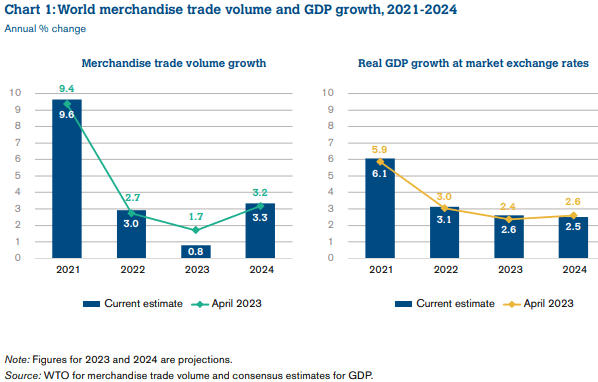The World Trade Organization (WTO) on Thursday released its outlook for world merchandise trade in 2022 and 2023.
Its 0.8% forecast for world trade in 2023 represents a downward revision of 0.9 percentage points from the previous forecast last April, which predicted a 1.7% increase in merchandise trade.
Reasons for the downward revision include a 1.1 percentage point reduction in the 2023 forecast for North America and a 3.0 percentage point reduction in the forecast for Asia.

Although the revision for European imports was smaller (0.1 percentage points), a contraction was already expected for the region.
These three regions account for the vast majority of global demand for imported goods, 88% of the total in 2022.
From another angle, the value of world merchandise trade in current U.S. dollar terms fell 5% year-on-year in the first half of 2023, partly as a result of falling commodity prices and partly due to the appreciation of the U.S. dollar, which tends to reduce the value of trade denominated in other currencies.
WTO Outlook
Despite the decline in the first half, the dollar value of merchandise trade still increased 27% compared to 2019.
According to the WTO outlook, several sectors contributed to the decline in merchandise trade in the first half of the year, including fuels and mining products (-15%), iron and steel (-17%), and textiles (-16 percent).
In comparison, trade in manufactured goods was down only 4 percent, thanks to strong growth in automotive products (18 percent) and other machinery (6 percent).
Commercial services trade statistics by category are not yet available for the second quarter of 2023.
However, data are available for the first quarter, along with monthly statistics for selected economies through June 2023.
World commercial services trade increased by 9% year-on-year in Q1 2023.
As recently as Q2 2022, commercial services trade increased 19% y-o-y, suggesting that services may be losing momentum.
In Q1 2023, commercial services trade was led by travel (+58%), followed by merchandise-related services (5%), other commercial services (5%) and transportation (-5 percent).

